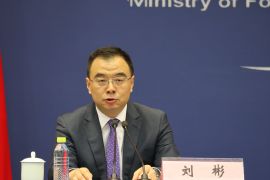"Right now we have started collecting inputs from different parties so in the next two to three years the road-map will be completed," BPPT Deputy Head for Agro Technology and Bio-industry Dr Listyani Wijayanti said here on Sunday.
Nanotechnology was a branch of sciences which had been growing rapidly in the past 10 years and therefore, Indonesia had no reasons to ignore the results of nanotechnology researches, she said.
While drawing up the road-map, the agency also had conducted a research on nano-herbal products using such typical Indonesian herbal plants as sambiloto which was also related to a herbal scientification program, she said.
"By applying nanotechnology, herbal products no longer produce waste, and are more stable and effective in curing diseases. With their particles measuring nano (with a diameter of 1-100 nanometers) their absorbing capacity is far better," she said.
She said BPPT was currently cooperating with cosmetic industries in conducting researches on herbal plants such as `pegagan` for anti-acne cosmetics and `khitosan` material for anti-aging cosmetics using nanotechnology.
"Anti-aging and anti-acne cosmetics have extraordinarily large market. Unfortunately, none of our national industries has been seriously benefiting from the market for nanotechnology and thus, it relies on imported technology and results of researches made by foreign agencies," she said.
Industries wanted information and database on the results of nanotechnology researches and products from domestic research institutes which could be applied accurately, she said.
At a recent discussion on nanotechnology for pharmaceutical products at the Tangerang-based Center of Science and Technology Research (Puspitek), nanotechnology expert Dr Heni Rachmawati of the Bandung Institute of Technology (ITB) said nano particle would increase solubility level of drugs, and transportation and release of active compound in a controllable way and improve the stability of relevant drugs.
"The use of nanotechnology for pharmaceutical products will in turn reduce production cost and toxic effect of drugs on their therapy doses," she said.(*)
(S012//H-NG/S012)
Editor: Ruslan Burhani
Copyright © ANTARA 2011











